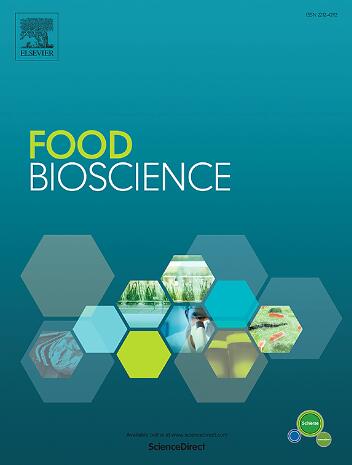Enzymatic synthesis of eicosapentaenoyl-lysophosphatidic acid and evaluation of antioxidant and anti-inflammatory properties
IF 4.8
1区 农林科学
Q1 FOOD SCIENCE & TECHNOLOGY
引用次数: 0
Abstract
Eicosapentaenoyl-lysophosphatidic acid (LPA20:5) was synthesized from α-glycero-3-phosphate disodium salt hydrate (α-GPA-Na) and EPA ethyl ester for the first time. Among α-GPA-Na, α-GPA-Mg, and α-GPA-Ca, α-GPA-Na was the preferred glycerophosphoric acid backbone due to its ease of esterification. Based on the LPA synthesis yield, Novozym 435 was selected for LPA20:5 synthesis. In addition, LPA20:5 showed strong ABTS radical scavenging abilities and antioxidant activities against hypochlorite ion (CLO) and hydrogen peroxide (H2O2) based on structural change of myoglobin. However, LPA18:0, the same lipid type as LPA20:5, showed negligible antioxidant activity. Notably, pretreatment with 20 μmol/L LPA20:5 reduced nitric oxide synthase (iNOS) protein expression by 56.7% compared to the LPS group, whereas pretreatment with 20 μmol/L LPA18:0 increased iNOS protein expression by 182.3% relative to the LPS group. Additionally, LPA20:5 exhibited a less inflammatory transcriptional signature, indicating by the downregulation of the expression of LPS-activated pro-inflammatory genes, including cyclooxygenase-2 (Cox-2), CXC chemokine ligands 2 (Cxcl2), interleukin (Il-)6, Il-1β, tumor necrosis factor-α (Tnf-α), and monocyte chemoattractant protein-1 (Mcp-1). Thus, LPA20:5 may serve as a promising compound for intervention in oxidative and inflammation-related diseases.

求助全文
约1分钟内获得全文
求助全文
来源期刊

Food Bioscience
Biochemistry, Genetics and Molecular Biology-Biochemistry
CiteScore
6.40
自引率
5.80%
发文量
671
审稿时长
27 days
期刊介绍:
Food Bioscience is a peer-reviewed journal that aims to provide a forum for recent developments in the field of bio-related food research. The journal focuses on both fundamental and applied research worldwide, with special attention to ethnic and cultural aspects of food bioresearch.
 求助内容:
求助内容: 应助结果提醒方式:
应助结果提醒方式:


